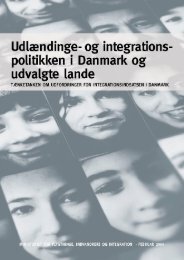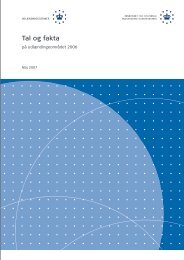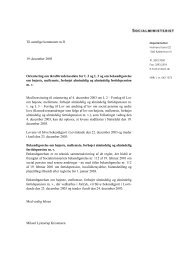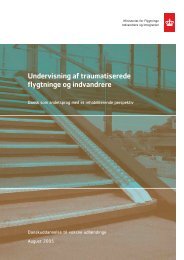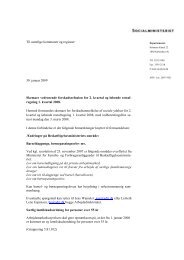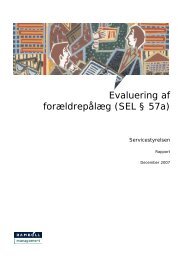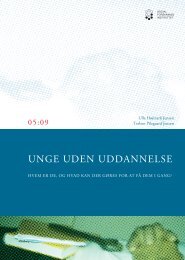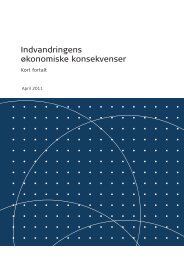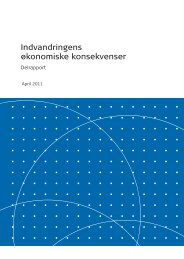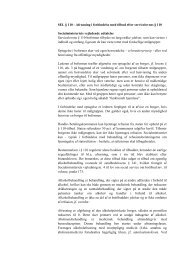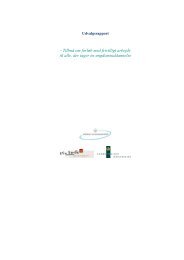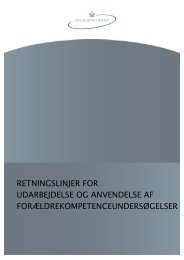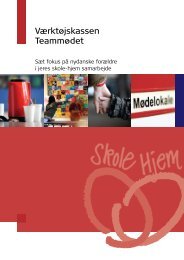Citizen in Denmark - Ny i Danmark
Citizen in Denmark - Ny i Danmark
Citizen in Denmark - Ny i Danmark
- No tags were found...
You also want an ePaper? Increase the reach of your titles
YUMPU automatically turns print PDFs into web optimized ePapers that Google loves.
Further educationShort-, medium-, and long-term higher educationIf you have completed upper secondary education, youcan undertake a programme of higher education. Thereare three types of higher education programmes:• The short programmes of higher education normallytake two years. Here you can study to become alaboratory technician, market economist, certifiedelectrician or mechanical eng<strong>in</strong>eer. Both vocationaleducation and tra<strong>in</strong><strong>in</strong>g and general upper secondaryeducation provide access to short programmes ofhigher education.• The medium-term, professional bachelor programmestake between three and four years. Here you can studyto become a teacher, social educator, nurse, eng<strong>in</strong>eeror social worker.• The long-term programmes of higher educationwhich are studied at university or higher education<strong>in</strong>stitutions. Here you can study to become a doctor,dentist, eng<strong>in</strong>eer or upper secondary school teacher.The university education programmes take betweenfive and six years and can be supplemented by a PhDprogramme where students receive a salary and workon research and teach for about three years.F<strong>in</strong>d out more about your education possibilities at www.uddannelsesguiden.dk.Entry requirementsEach programme has its own entry requirements that typicallyask for specific exams and sometimes other qualifications.Some education programmes operate a policy of restrictedadmission because there are more qualified applicants thanavailable places. Most education programmes have a quotasystem with two quotas. This means that they accept applicants<strong>in</strong> two quotas. In the first quota, applicants are accepted onthe basis of their qualification exam<strong>in</strong>ation grades. In thesecond quota, students are accepted on the basis of otherselection criteria specific to the programme.Coord<strong>in</strong>ated enrolment system (KOT)Nearly all higher education programmes require studentsto seek enrolment through the coord<strong>in</strong>ated enrolmentsystem (KOT). You can obta<strong>in</strong> application forms by logg<strong>in</strong>gonto www.optagelse.dk.Entrance exam<strong>in</strong>ationsSome education programmes require entrance exams. Thistypically applies to creative or craft-oriented study programmessuch as act<strong>in</strong>g, film direct<strong>in</strong>g, journalism and design.Foreign qualificationsSpecial admission rules apply to applicants hold<strong>in</strong>g a foreignqualification. You can read more about these rules <strong>in</strong> theexam<strong>in</strong>ation handbook at www.ciriusonl<strong>in</strong>e.dk.Familiarise yourself with the programmeand meet fellow studentsAt most universities and higher education <strong>in</strong>stitutions,programmes beg<strong>in</strong> with an orientation course for newstudents. Here, new students are <strong>in</strong>troduced to each otherand the programme by means of academic presentations,discussions and festive activities. Often, new students willgo off on a short cottage trip together.SCHOOL AND EDUCATION91



